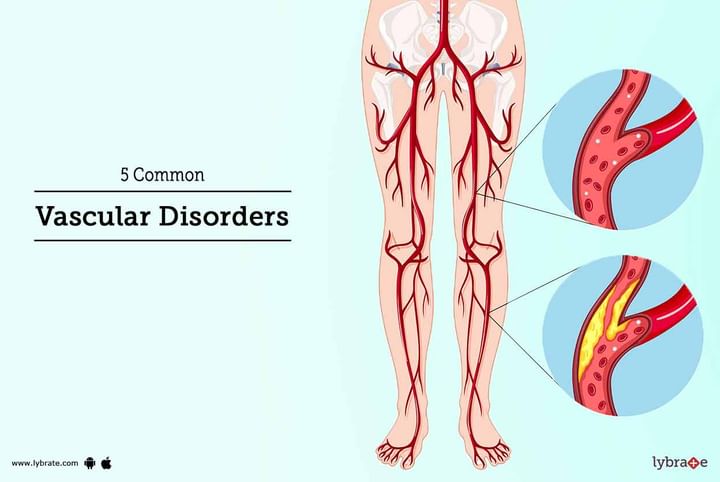5 Common Vascular Disorders
Vascular disorders are disorders of the vessels in your body that carry either blood or waste products. The vascular system consists of the arteries (that carry blood away from the heart), veins (that carry blood to the heart) and lymph vessels (that carry waste products to be excreted from the body). The various diseases of the vascular or circulatory system are:
- Peripheral Artery Disease: Peripheral arteries carry blood to the various organs and tissues in the body. Accumulation of cholesterol and fat in the vessels narrow the pathway for the blood to flow. This can impair blood flow to the tissues in the body and cause complications. Various medications used to lower cholesterol and blood pressure can also be used for peripheral artery disease.
- Buerger's Disease: This disease causes obstructions in the veins and arteries in the legs. This can hamper blood supply in the toes and the feet. It causes pain and may require amputation in severe cases. Treatments for this disease include smoking cessation and medications to dilute blood vessels.
- Aneurysm: An aneurysm is swelling in the blood vessel walls; it usually occurs in the aorta. The artery walls become fragile and are placed under a lot of stress; this may lead to a sudden rupture of the aortic vessels. This disorder is usually treated by surgical procedures.
- Peripheral Venous Disease: Peripheral venous disease is characterized by damage to the valves that allows blood to flow in a single direction. Damaged valves can cause blood to flow backwards and therefore, accumulate. Treatments for this disorder are incorporating certain lifestyle habits such as quitting smoking and alcohol.
- Blood clots in the veins: Blood clots may occur in the veins present inside the muscles of the thighs and lower legs which lead to deep vein thrombosis. You may be prescribed anti-coagulants, also known as blood thinners, to treat this disorder.
Causes
People with diseases such diabetes, high blood pressure, or kidney failure can be more likely to have vessel problems. Working with vibrating tools, being in cold temperatures, and smoking can worsen vascular problems. Causes of vascular disorders usually fit into one of 5 groups:
- Traumatic, which occur after injury
- Compressive, which occur when the pipes flatten
- Occlusive, which occur when pipes are blocked
- Tumors (growths) or malformations (deformed, tangled pipes), which may or may not be present at birth
- Vessel spasms, which occur when abnormal control of vessels causes them to narrow
Symptoms
Symptoms of vascular disorders can include:
- Pain
- Abnormal color changes in the fingertips
- Ulcers or wounds that do not heal
- Hand problems when in cold temperatures or locations
- Numbness or tingling of the fingertips
- Swelling
- Cool or cold fingers and/or hands
If you wish to discuss about any specific problem, you can consult a doctor.



+1.svg)
